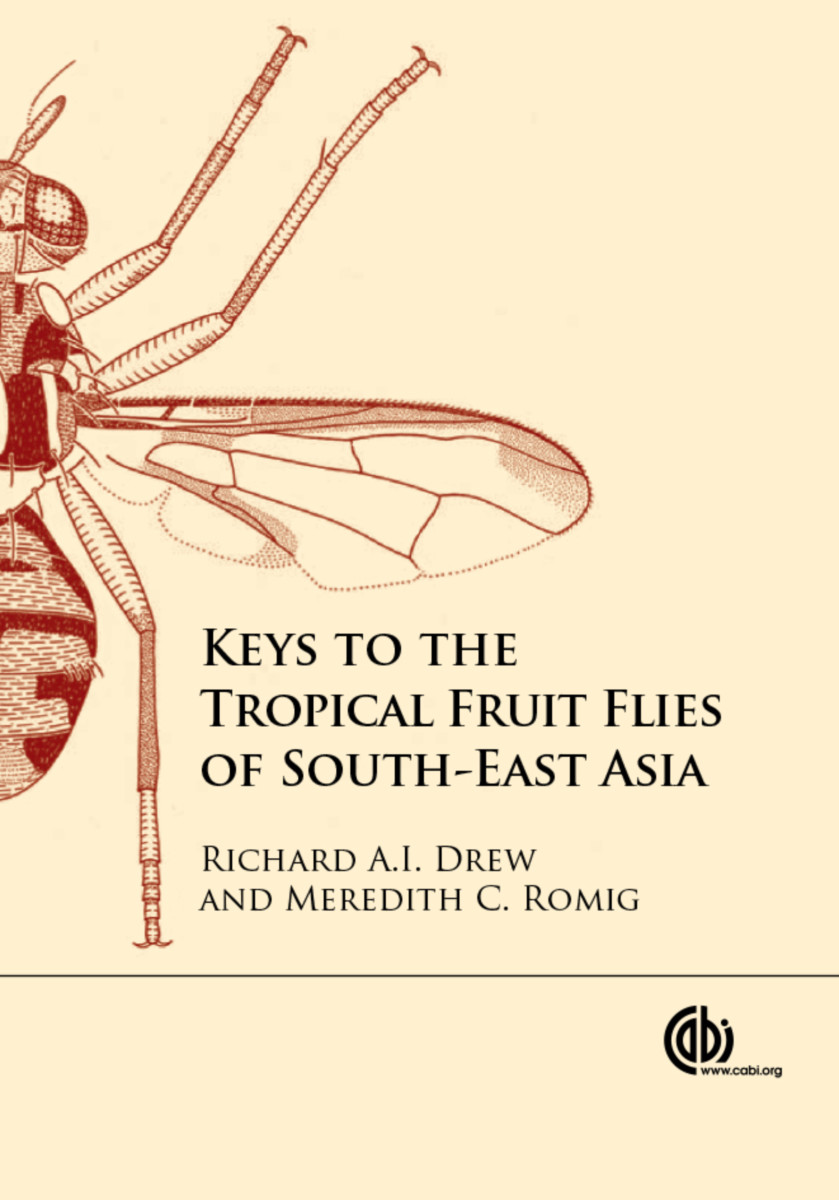Keys to the Tropical Fruit Flies of South-East Asia
(Tephritidae: Dacinae)
- Publisher
CABI - Published
4th January 2017 - ISBN 9781780644196
- Language English
- Pages 496 pp.
- Size 8.625" x 11"
- Images illus
Fruit flies are a major issue facing horticultural producers, and as global warming and species migration become more prevalent issues there is an urgent need for easy identification of these pests. A companion volume to Tropical Fruit Flies of South-East Asia (Tephritidae: Dacinae), this book provides fully-illustrated keys for the identification of all currently-known Dacinae fruit flies. Focusing on south-east Asian fauna, it covers areas including India, Bhutan, Nepal, Sri Lanka, Myanmar, China, Taiwan, Japan, the Philippines, Palau, Vietnam, Thailand, Singapore, Malaysia and Indonesia.
This major reference work is produced by experts with over 80 years' combined research experience, and through simple identification information can help prevent these major pest species being introduced to new geographical areas. Of particular value to agriculture and quarantine officers responsible for the detection of new incursions, where early detection is both economical and essential to guarantee eradication, this book is also a valuable resource for researchers and students of agriculture and entomology.
1. Introduction
2. Species responses to male lures
3. Morphological characters used to identify species of Dacini
Section 1: Keys to Genera, Subgenera and Species of Dacini
4. Key to Genera in Tribe Dacini (including Genus Ichneumonopsis Hardy)
5. Key to Subgenera in Genus Bactrocera (including Subgenera Afrodacus Bezzi and Nesodacus Perkins)
6. Key to Subgenera in Genus Dacus
Section 2: Genus Bactrocera Macquart
7. Key to species in Subgenus Asiadacus Perkins
8. Key to species in Subgenus Bactrocera Macquart
9. Key to species in dorsalis complex
10. Key to species in nigrotibialis complex
11. Key to species in Subgenus Bulladacus Drew & Hancock
12. Key to species in Subgenus Daculus Speiser
13. Key to species in Subgenus Gymnodacus Munro
14. Key to species in Subgenus Hemigymnodacus Hardy
15. Key to species in Subgenus Javadacus Hardy
16. Key to species in Subgenus Papuodacus Drew
17. Key to species in Subgenus Paradacus Perkins
18. Key to species in Subgenus Parasinodacus Drew & Romig
19. Key to species in Subgenus Paratridacus Shiraki
20. Key to species in Subgenus Parazeugodacus Shiraki
21. Key to species in Subgenus Semicallantra Drew
22. Key to species in Subgenus Sinodacus Zia
23. Key to species in Subgenus Tetradacus Miyake
24. Key to species in Subgenus Zeugodacus Hendel
25. Key to species in scutellaris complex
26. Key to species in tau complex
Section 3: Genus Dacus Fabricius
27. Key to species in Genus Dacus Fabricius (including Subgenera Callantra Walker, Didacus Collart, Leptoxyda Macquart, Mellesis Bezzi and Neodacus Perkins)
Section 4: Genus Monacrostichus Bezzi
28. Key to species in Genus Monacrostichus Bezzi
Appendix I: Subgeneric changes proposed since the publication of Drew & Romig (2013)
Richard A. I. Drew
Richard Drew is a leading world authority on the taxonomy, ecology and behavior of tropical fruit flies in the tephritid sub-family Dacinae. His research has led to the definition of all known major pest species and a sound knowledge of their ecology and pest management strategies. He has published over 140 research papers and three major books. He has received a range of awards including the Order of Australia and the Clunies Ross National Science and Technology Award, Australia’s most prestigious science award. He is also a fellow of the Australian Academy of Technology and Engineering.
Meredith C. Romig
Meredith Romig has collaborated with Richard Drew for over four decades and has developed an extensive knowledge of fruit fly entomology. She has undertaken extensive field research in many countries, co-authored numerous publications and has developed excellence in technical editing of scientific works. She also pioneered the scientific artwork which is used in her current publications describing fruit fly species.


